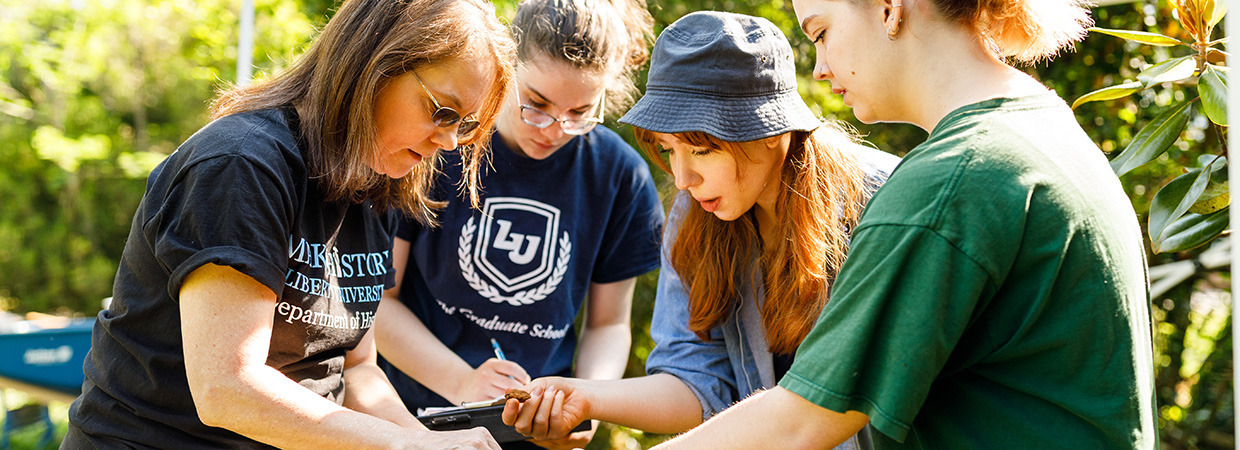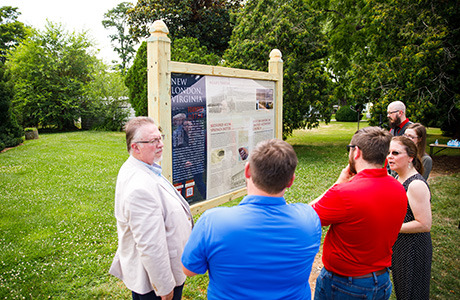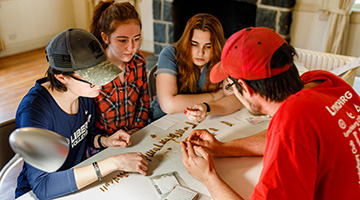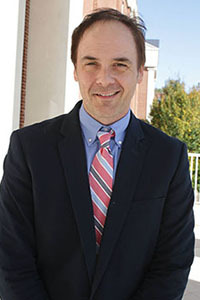History

Get Your History Degree From a Christian University
Prepare for a successful career while earning your bachelor’s, master’s, doctoral, associate, or minor from Liberty University’s Department of History. With our history, social sciences, and military studies degree programs, your knowledge of these fields will be enriched as you explore exciting career options.
Courses are taught from a Christian worldview by experienced professors who share your passion for history and are grounded in their faith. Interested in a career in politics, education, or communications? A degree from our Department of History will get you ready for these career opportunities and more.
History Featured Areas of Study
View all History Degrees
- Earn a bachelor’s and master’s degree with our History dual degrees
- Enhance your degree with a History minor
- View certificate programs offered by the History department
- For advising, contact history@liberty.edu
Featured History Faculty
Student Opportunities
Public History Projects
- Chaplains Museum
Open Monday through Friday 12:00 p.m.-4:30 p.m. and Saturday 10:00 a.m.-2:00 p.m. on the terrace level of the JF Library. Summer hours vary.
- New London Projects
The New London projects give students hands-on opportunities in archaeology, historical architecture, historical interpretation, and much more.
- 250th Commemorative Conference
In honor of the 250th anniversary of the founding of the United States, the Department of History invites scholars, students, and researchers to participate in our commemorative conference, America’s Founding: Legacy and Influence. Join us as we reflect on the story of a nation and the faith, courage, and convictions that continue to shape it. Liberty University is proud to be a Commemorative Partner of VA250—Virginia’s American Revolution 250 Commission.


Start Your Journey as a Student at Liberty
What Our Alumni Say:
Fill out our Alumni Survey
The History Department is hiring student workers for the upcoming spring semester! Applicants must be eligible for Federal Work-Study, and History majors are especially encouraged to apply. To submit an application, scan the QR code or visit this website: https://liberty.wd5.myworkdayjobs.com/en-US/lu_job_board_student/job/History-Dept-Work-Study_R0009152.
Dec 4

Four walls and a roof make a home? Not at Poplar Forest!
In 1806, then President Thomas Jefferson began construction of an octagonal villa on a plot of land in what is now known as Forest, Virginia. This feat of architecture drew influence from the works of Italian architect Andrea Palladio, as well as the English and French styles which Jefferson saw during his time as a diplomat. Contrasting with his public residence in Monticello, Poplar Forest was meant to serve as a private retreat for Jefferson to get away from the bustle of everyday life.
The idea of Poplar Forest first took root in Jefferson’s mind in 1781, when he fled Monticello to evade capture by the British during the Revolutionary War. The design went through several additional phases before he settled on its final design: an octagonal structure with a square central dining room with a wing of offices, stair pavilions, and entrance porticos added for the sake of practicality.
Poplar Forest opened for public visitation in 1986, following acquisition by the Corporation for Jefferson’s Poplar Forest, and the foundation completed restoration of the main floor and exterior in 2023.
Nov 21

BIG NEWS!! The April Conference, America’s Founding: Legacy and Influence, is now accepting proposals. The opportunity is open to all students and professors. To learn more about submission guidelines and access the submission portal, click the link in the conference story highlight or visit https://www.liberty.edu/arts-sciences/history/250th-commemorative-conference/. For inquiries, contact the organizing committee at history@liberty.edu.
Nov 7

"Remember, remember!
The fifth of November,
The Gunpowder treason and plot;"
On this day in 1605, a timely letter of warning led to the foiling of a plot to assassinate King James I of England. The brainchild of revolutionaries led by Robert Catesby, the Gunpowder Treason Plot would have involved blowing up the English king and Parliament with 36 barrels of gunpowder, followed by a popular revolt to install James`s nine-year-old daughter Elizabeth as the new queen. However, an anonymous letter forewarned English officials of the plot, and guards arrested Guy Fawkes, the conspirator in charge of protecting the explosives, before he could set the plot in motion. The day of the plot, November 5, has since become known as Guy Fawkes Night and is an annual celebration of the king`s survival, observed mainly in Great Britain with the lighting of bonfires and fireworks displays.
Nov 5

Contact
(434) 592-4366
history@liberty.edu
DeMoss Hall 4334









